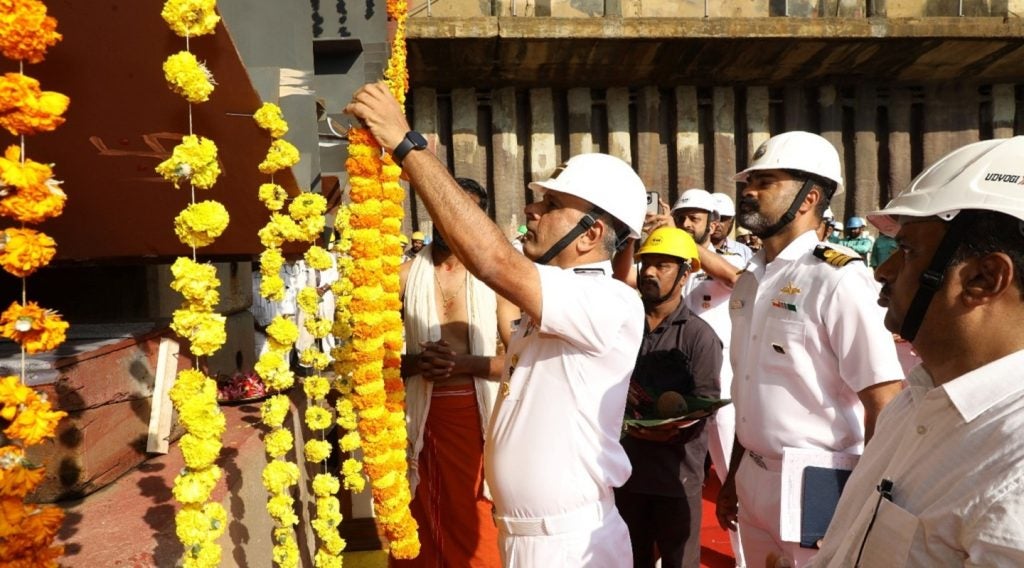Two keels for the Indian Navy’s fourth and fifth anti-submarine warfare shallow water craft (ASW-SWC) vessels have been laid by the original equipment manufacturer Cochin Shipyard Limited (CSL), the largest shipbuilding facility in India, on 8 December 2023.
India’s eight-strong ASW-SWC fleet will replace the ageing Abhay-class corvettes, of which eight are currently in operation, having entered service with the Indian Navy in 1989. The construction of the new fleet forms a part of the government’s ‘Aatmanirbhar Bharat’ (Make in India) initiative.
Originally signed on 30 April 2019, the Indian Ministry of Defence contracted CSL to build eight ASW-SWC ships. The first of the class, BY523 (Mahe), was began construction in December 2020, two subsequent vessels in 2021.
This new fleet will perform subsurface surveillance on coastal waters, co-ordinate ASW operations with aircraft, and destroy subsurface targets in inland waters. These warships can also perform search and rescue operations day and night in coastal areas, defend intruding aircraft, and lay mines on the seabed.
The Indian Navy is explicitly focusing on augmenting its ASW capabilities. The service has already placed an urgent order for 24 MH-60R Seahawk Anti-Submarine Warfare (ASW) helicopters in February 2020 and could order additional helicopters soon.
It also plans to order six to 10 additional P-8A Poseidon maritime patrol aircraft. However, according to some reports the deal has been dropped in favour of developing Multi-Mission Maritime Aircraft (MMMA), which would be based on the C–295 platform.
ASW-SWC vessels will have a displacement of 750 tonnes and will be equipped with stealth technologies, making them undetected targets for enemy submarines and other surveillance systems.
The overall length and breadth of the vessel will be 78 metres (m) and 11.3m respectively. The ship will have a maximum draught of 2.7m at full load. It can operate in coastal waters within 200 nautical miles of the base port. The vessel will have the capacity to accommodate nearly 57 personnel.











